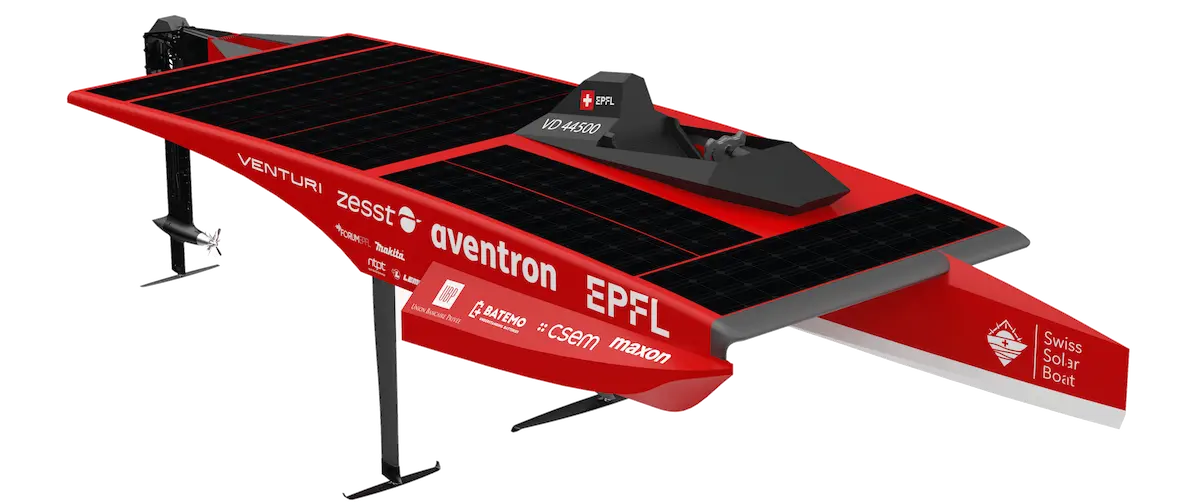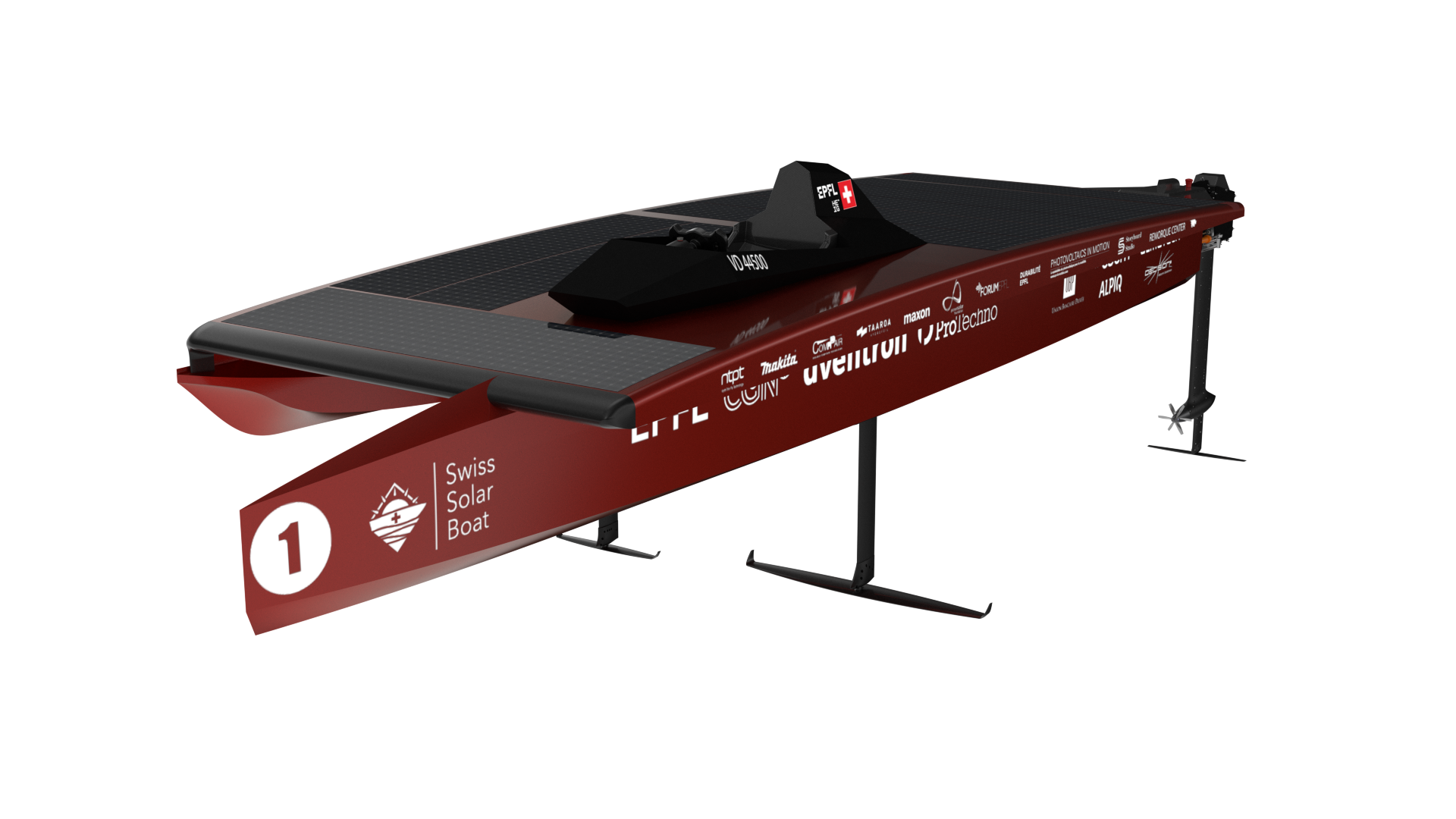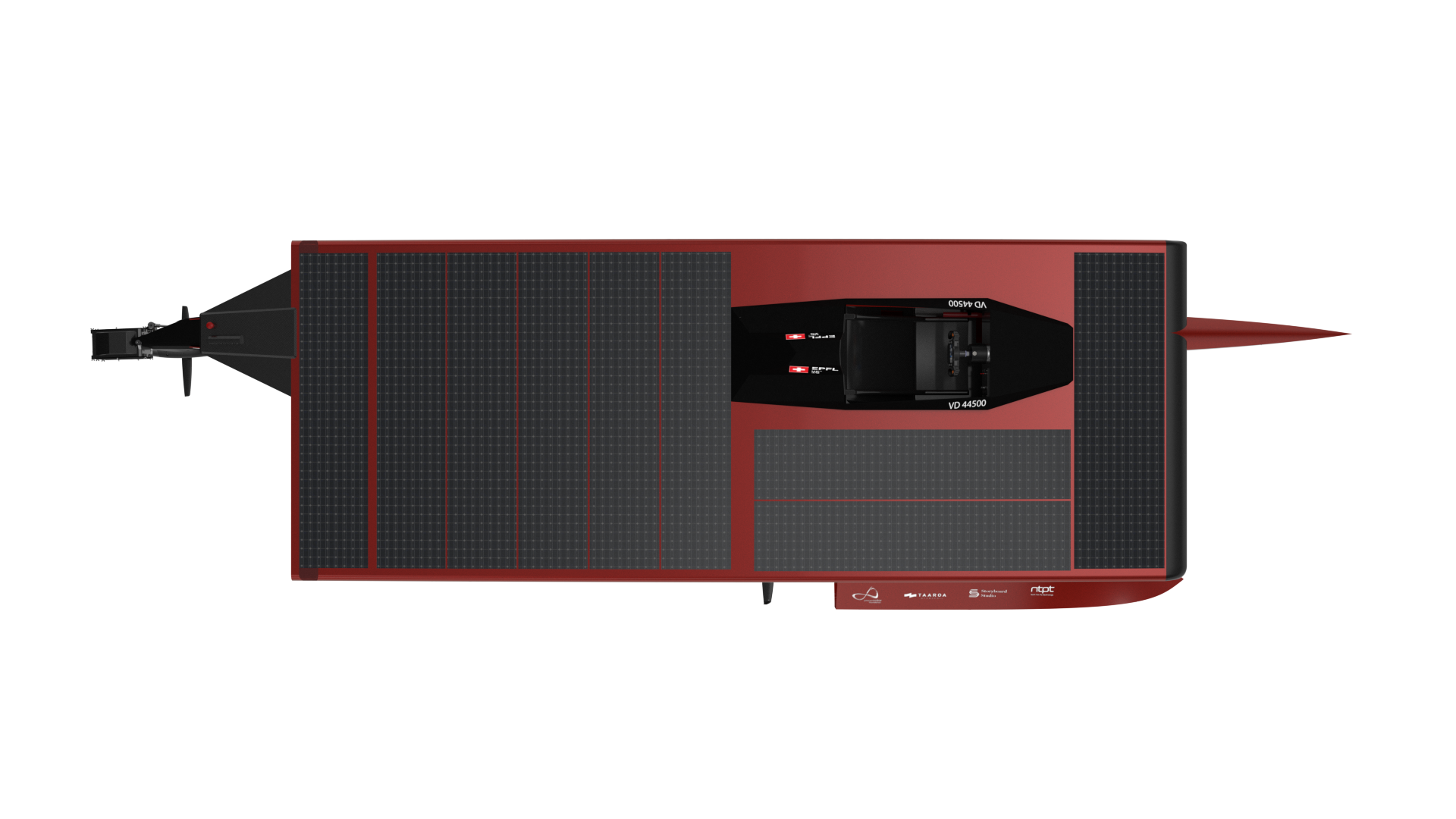
The Dahu : An innovative and ambitious boat
A technical challenge for the structure
The structure must be as light as possible and at the same time be able to withstand enormous loads of more than one tonne. This will be achieved by using the highest technology in terms of composite materials. Indeed, this is thanks to ultra high modulus carbon prepregs of the order of 0.04mm in thickness. This will enable us to achieve wall thicknesses of between 0.25-1mm. In addition, the use of a sandwich structure based on a Nomex honeycomb body or Airex foam will considerably increase the local bending stiffness with minimal weight increase.
| A technical challenge for the structure | The geometry and CAD testing |
|---|---|
 |  |
The geometry of the various parts is then developed using CAD software and tested with theoretical load cases modelled by finite elements. After several iterations, it becomes possible to refine the choice of materials used as well as the dimensions of the different structures in order to minimise the weight of the structure. In addition, the surface finish of the structures in contact with the water is of great importance in reducing drag. This requires a long, complex and costly implementation based on the creation of negative carbon moulds.
A challenge for solar
The solar panels must provide maximum power to the boat, at all times, in all circumstances. Thanks to the best monocrystalline silicon solar cells, we will recover a maximum of solar energy. In order to be as light as possible, a custom-made solar panel weighing approximately less than one kilo per square metre has been developed. The dimensions and layout of the panels have been optimised for the shape of our boat, possible shading and the electrical constraints of the competition.
A second challenge is to hang the solar panels on the deck of the boat. The rigidity of the deck guarantees the integrity of the solar panels, but they must be able to withstand the sailing conditions. A simple but robust bonding system allows us to be as light as possible while guaranteeing sufficient adhesion.
A third challenge is to make the solar panels interact with the rest of the boat (especially the battery) in such a way as to extract maximum power without losses. To do this, we use MPPTs (Maximum Power Point Trackers), an electrical converter that extracts maximum power from the panels. The MPPTs are aware of all the loads to be supplied to the boat and instantly adapt the power produced.
A Challenge for Hydrogen
To address the limitations of solar power and increase the Dahu’s endurance, we integrated a hydrogen range extender (REX) after our participation in the Monaco Energy Boat Challenge. Hydrogen, with its higher energy density, allowed us to triple the boat’s autonomy, a crucial improvement as we prepared for the 26km Lausanne-Evian crossing. This integration also served as an educational opportunity for our team, introducing us to hydrogen propulsion—a new field in maritime technology—and preparing us for its use as the primary power source in our next project, the Renewable Energy Foiler (REF).
The REX system consists of a 2kW fuel cell and two hydrogen tanks storing gaseous hydrogen at 200 bars. To accommodate this, we added a custom-built “sled” on the boat, housing the tanks and fuel cell in a ventilated compartment that maintains the boat’s balance and center of gravity.
One of the biggest challenges we faced was ensuring safety, as hydrogen becomes highly explosive in confined spaces. To mitigate this, we installed two fans and we let the area open to provide constant airflow and H2 sensors to detect leaks. A purging system was also implemented to eliminate any residual hydrogen before launching the boat. Additionally, complying with hydrogen safety regulations, which are still evolving, required considerable research and careful design.
The integration of the REX system resulted in a tripled autonomy with only a 25% weight increase, demonstrating the significant benefits of hydrogen for sustainable maritime transport. Our successful Lausanne-Evian crossing stands as proof of this innovation and marks a critical milestone for our team.